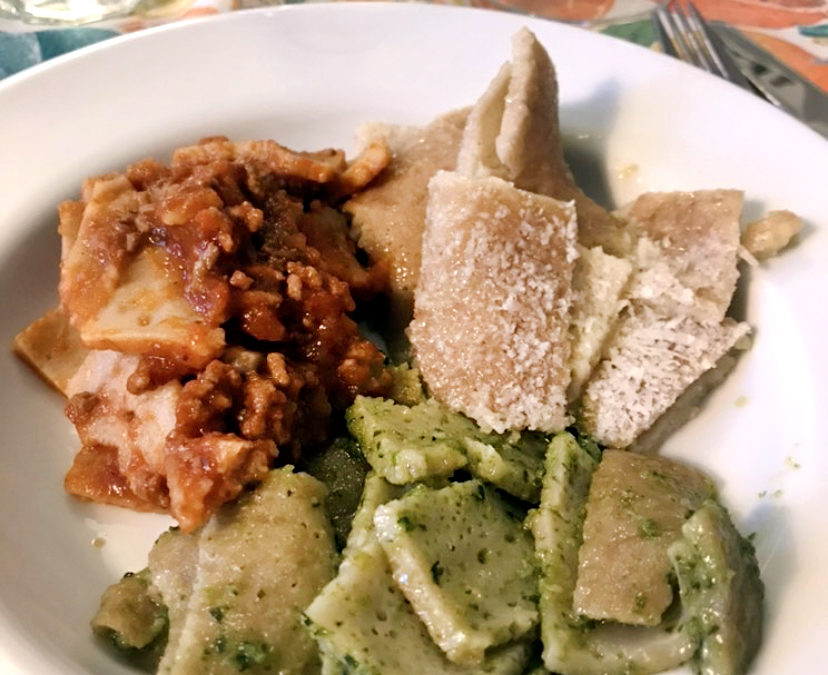Few people know that Testaroli are one of the most ancient types of pasta, born during the Roman Empire.
Typical of Lunigiana, a Ligurian area bordering Tuscany, this “poor food” was prepared by the ancient local peasant with only 3 ingredients. It became popular only in the post-war period when pasta factories began the industrial production. this first course is recognized and preserved by the Slow Food Presidium.
Visualizza questo post su Instagram
Only 3 ingredients for a tasty experience
Water, salt, flour: as easy as it is. In ancient times they were prepared with spelt flour, today they are also produced with wheat flour. The cooking method distinguishes them from any other types of pasta, in fact once the ingredients are mixed, the batter is spread on a particular type of container, which helps to create a kind of crêpe. The name Testaroli comes indeed from some ancient cooking pots: the “testi” were once made of terracotta or cast iron and they had a flat rounded shape. These typical pots were easily transportable, farmers and shepherds used to bring the testi to their new temporary residences and here, thanks to this precious tool, they were able to prepare the most varied foods.
Visualizza questo post su Instagram
How to prepare ready-made Testaroli
Today Testaroli are sold in supermarkets ready to be heated and seasoned. It’s very easy to prepare them: cut them into lozenges of about 5 cm per side, while bringing a pot of salted water to boil; once the water boils, turn off the heat and add the Testaroli to let them steep for about a minute. The typical Ligurian seasoning for this type of pasta is, of course, pesto. But there are endless possibilities of combinations and sauces to season them: tomato and pecorino, pistachio pesto, ragu’ or porcini and taleggio etc.
Visualizza questo post su Instagram
If you want to try making them at home, we recommend this recipe:
Flour 00, 300 g
Water, 450 g
1 pinch fine salt
In a large bowl, place the flour and salt in a large bowl and pour in the water while stirring with a whisk. You should obtain a smooth and homogeneous batter, which you should then pour into a pan (preferably cast iron) previously heated and greased with a little oil. The thickness of the Testarolo should be between 3-5 mm. Let it cook for about 3-4 minutes, then with a spatula turn it on the other side, cooking it for about 1 minute. Once cooled, cut the Testaroli into diamond shapes of about 5 cm.

